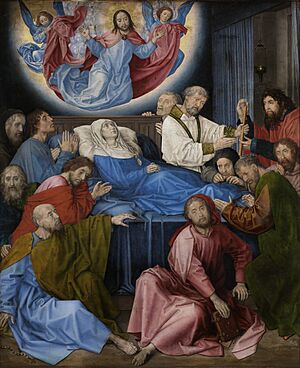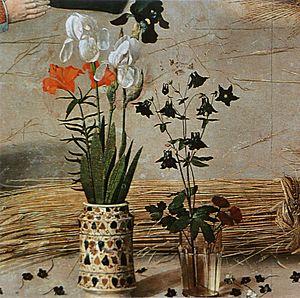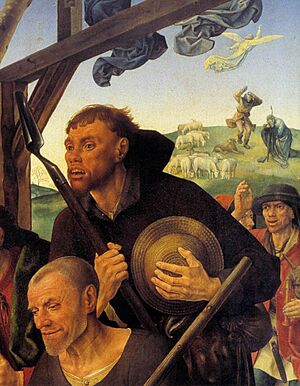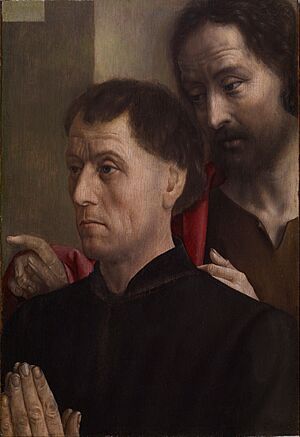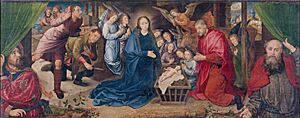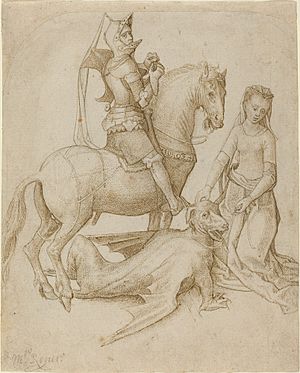Hugo van der Goes facts for kids
Quick facts for kids
Hugo van der Goes
|
|
|---|---|

Portrait of a Man by Van der Goes
|
|
| Born | c. 1430/1440 probably Ghent
|
| Died | 1482 (aged 42 to 52) |
| Nationality | Flemish |
|
Notable work
|
Portinari Triptych Monforte Altarpiece Fall and Redemption of Man |
| Movement | Early Netherlandish painting, Northern Renaissance |
Hugo van der Goes (born around 1430/1440 – died 1482) was a very important and creative Flemish painter. He lived in the late 1400s. Hugo van der Goes was famous for painting large altarpieces and also many portraits.
He brought new ideas to painting with his grand style. He used special colors and painted portraits in a unique way. His most famous work, the Portinari Triptych, arrived in Florence in 1483. This painting helped change how artists used realism and color in Italian Renaissance art.
Contents
Life of Hugo van der Goes
Hugo van der Goes was probably born in or near Ghent, Belgium, around 1440. We don't know much about his early life. In 1467, he became a master painter in Ghent's painters' guild. This was a group for artists.
In 1468, the city of Ghent asked him to create art for special events. He also made decorations in Bruges to celebrate a royal wedding. This was between Charles the Bold and Margaret of York. Hugo van der Goes became a leader among painters in Ghent. He was chosen as a deacon for the painters' guild from 1474 to 1476.

During this time, he painted the Adoration of the Magi, also known as the Monforte Altarpiece. He also started working on the famous Portinari Altarpiece. This was for Tommaso Portinari, a rich Italian businessman. The altarpiece arrived in Florence in 1483, after Hugo van der Goes had already passed away.
Life in the Monastery
In 1477, when he was at the top of his career, Hugo van der Goes made a big decision. He closed his workshop in Ghent. He then became a lay brother at a monastery called Rood Klooster. This monastery was near Auderghem, which is now part of Brussels.
At the monastery, he still had some special rights. He could keep painting and even drink wine. Other monks wrote that important people, like Archduke Maximillian, came to visit him.
In 1482, the city of Leuven asked him to check on some unfinished paintings. These were by another artist, Dieric Bouts, who had died. Hugo van der Goes helped finish Bouts' 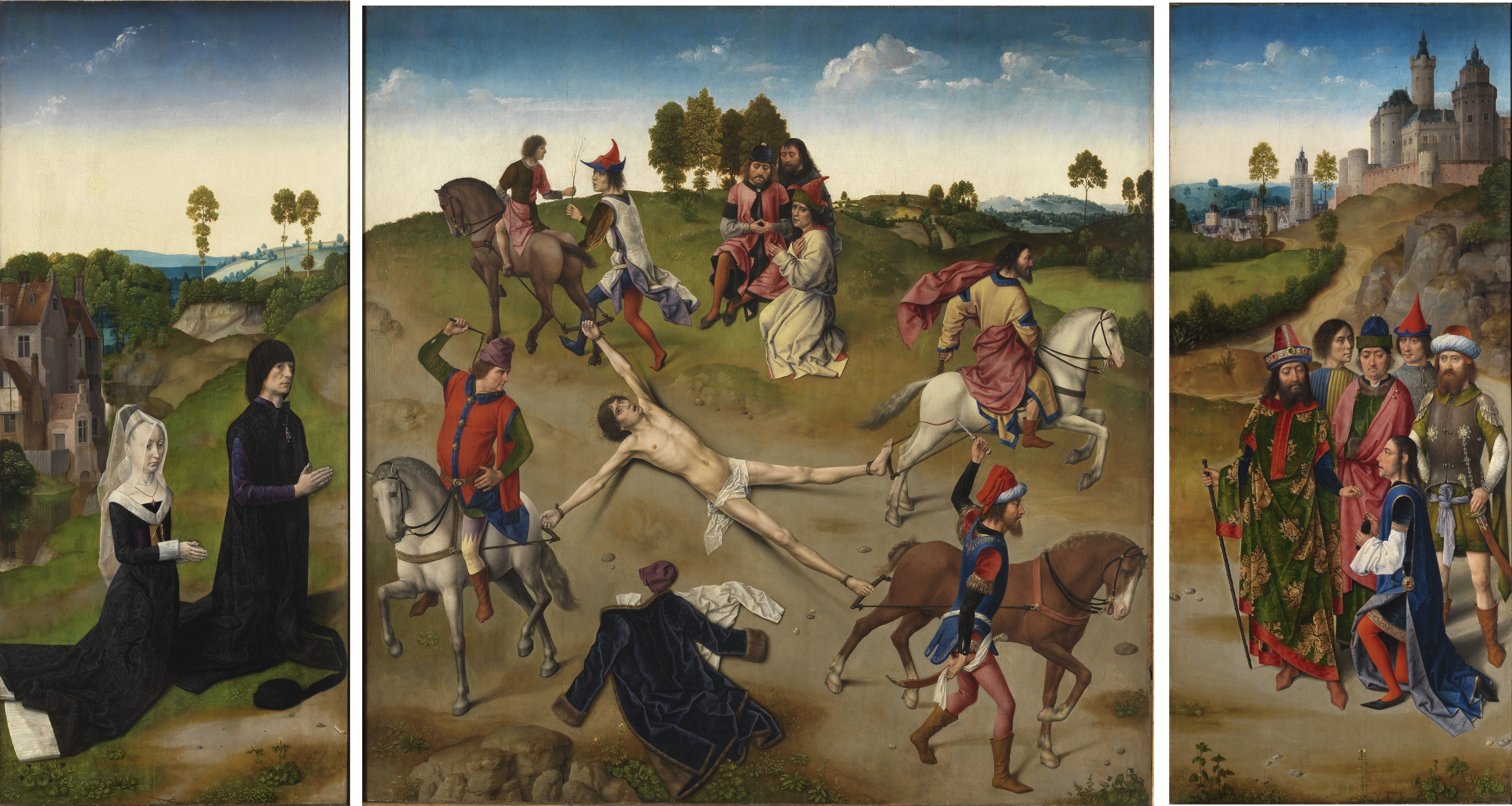 . He painted the portraits of the couple who paid for the artwork.
. He painted the portraits of the couple who paid for the artwork.
Later that year, Hugo van der Goes went on a trip to Cologne. On the way back, he became very ill and sad. His companions brought him back to the monastery. He died there soon after.
Some people think his worries about his art made him sick. He was said to be "deeply troubled" about finishing his paintings. A doctor from that time wrote about a painter who became sad trying to paint as well as the Ghent Altarpiece. This might have been Hugo van der Goes.
His story was rediscovered in 1863. This inspired a Belgian painter, Emile Wauters, to create a painting of him. It was called 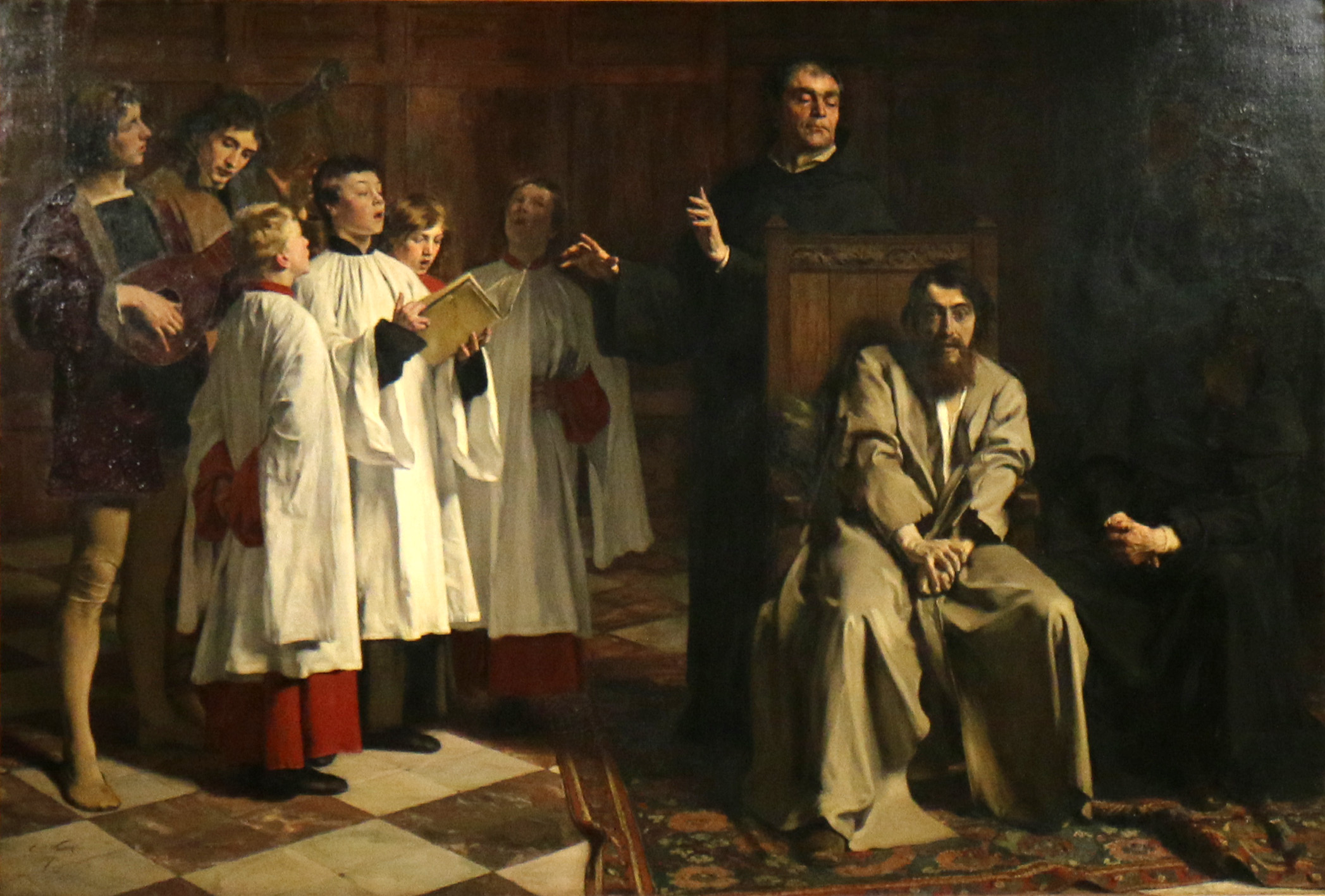 (1872). This painting showed him during his illness. Even Vincent van Gogh mentioned this painting and felt a connection to Hugo van der Goes.
(1872). This painting showed him during his illness. Even Vincent van Gogh mentioned this painting and felt a connection to Hugo van der Goes.
Artistic Works
It has been hard for art experts to figure out which paintings were truly by Hugo van der Goes. Many works once thought to be his are now believed to be copies. These copies were made by his students or other artists who followed his style.
The only work that is definitely by him is the Portinari Altarpiece from 1470. Experts compare other paintings to this one to decide if they are his.
Many of Hugo van der Goes's original paintings have been lost. We only know about them through copies made later. The large number of copies shows how much people admired his work. His art also had a big impact on other early Flemish artists.
Hugo van der Goes painted many altarpieces and portraits. His main religious paintings include the Portinari Triptych, the 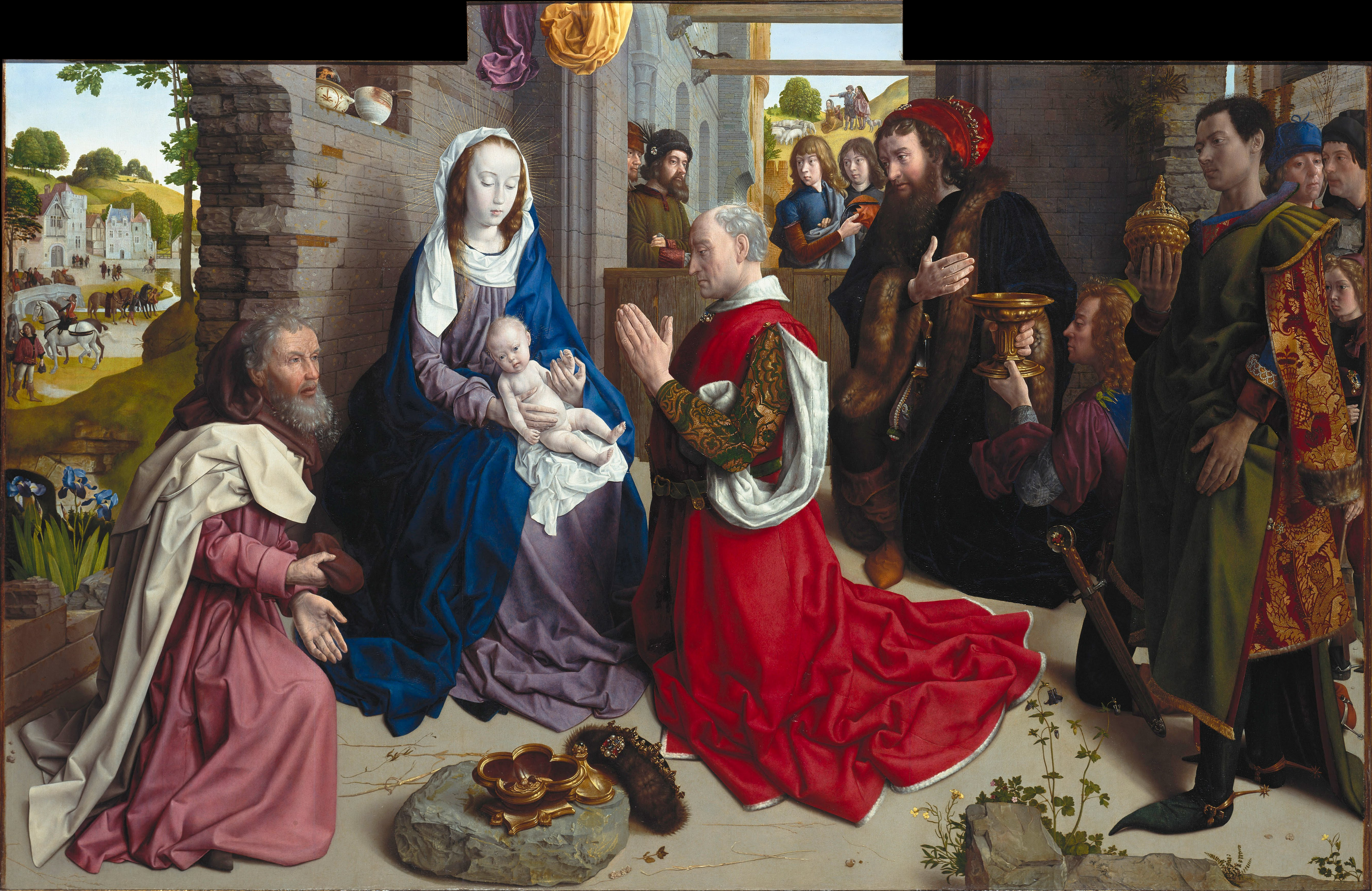 (Monforte Altarpiece), and the Adoration of the Shepherds. He also painted the ' and the Death of the Virgin.
(Monforte Altarpiece), and the Adoration of the Shepherds. He also painted the ' and the Death of the Virgin.
He also created the Trinity Altarpiece for a church in Edinburgh, Scotland. This altarpiece shows King James III, his son, and his wife. It also shows Edward Bonkil, who ordered the painting.
The Portinari Triptych
Van der Goes's most famous artwork is the Portinari Triptych. It is now in the Uffizi gallery in Florence. This large altarpiece was ordered by Tommaso Portinari. He was the manager of the Medici Bank in Bruges. The painting was made for a church in a hospital in Florence.
The Portinari Altarpiece arrived in Florence in 1483. It was hung in the hospital church. The way van der Goes painted the shepherds in this artwork really impressed painters in Florence. Domenico Ghirlandaio was one artist who was inspired by it.
The Portinari Triptych was the largest Dutch artwork in Florence. People praised it a lot. An art writer named Giorgio Vasari wrote about it in 1550. He said it was by "Hugo of Antwerp," which is how we know it was by Hugo van der Goes. All his other works are linked to him because they look similar to this altarpiece.
For a while, people thought other artists had painted the triptych. But in 1824, Karl Friedrich Schinkel said it was by Hugo van der Goes. This idea later became widely accepted.
The middle part of the Portinari Triptych shows the birth of Jesus. It also shows the shepherds worshiping him. Many people have tried to understand the hidden meanings in the painting. It highlights the importance of the Eucharist (a Christian ceremony) and the suffering of Christ.
The angels wear special clothes for church. A bundle of wheat in the painting looks like the body of Christ. The sad faces of the people show Christ's suffering. There are also flowers in the front of the painting. These include red lilies, white and purple irises, and carnations.
One of the flower pots is a special jar called an albarello. These jars were used in pharmacies for medicines. This detail reminds us that the painting was made for a hospital. Some of the flowers were also used as medicine. These details also hint at the miraculous birth of Jesus. Christians believe this birth helps free people from original sin.
The side panels of the triptych show the Portinari family members. They were the ones who paid for and gave the altarpiece. The right side shows the women of the family. The left side shows the men. The right side also shows the wise men being told about Jesus's birth. The left side shows Mary and Joseph traveling to Bethlehem.
Portraits by Van der Goes
Hugo van der Goes is seen as one of the most important portrait artists of the 1400s. At that time, painting portraits became more popular. This was because people started to focus more on the importance of each person. This idea came from a movement called humanism.
We don't have any separate portraits by Hugo van der Goes that have survived. We only know his skill from the portraits he included in his religious paintings. These are called donor portraits. They show the people who paid for the artwork.
Examples include the left side of the  and the Portinari Altarpiece. Also, the
and the Portinari Altarpiece. Also, the 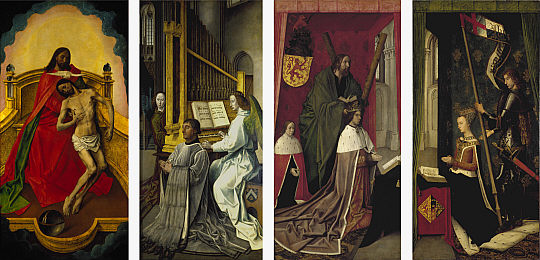 and parts of other altarpieces like the
and parts of other altarpieces like the 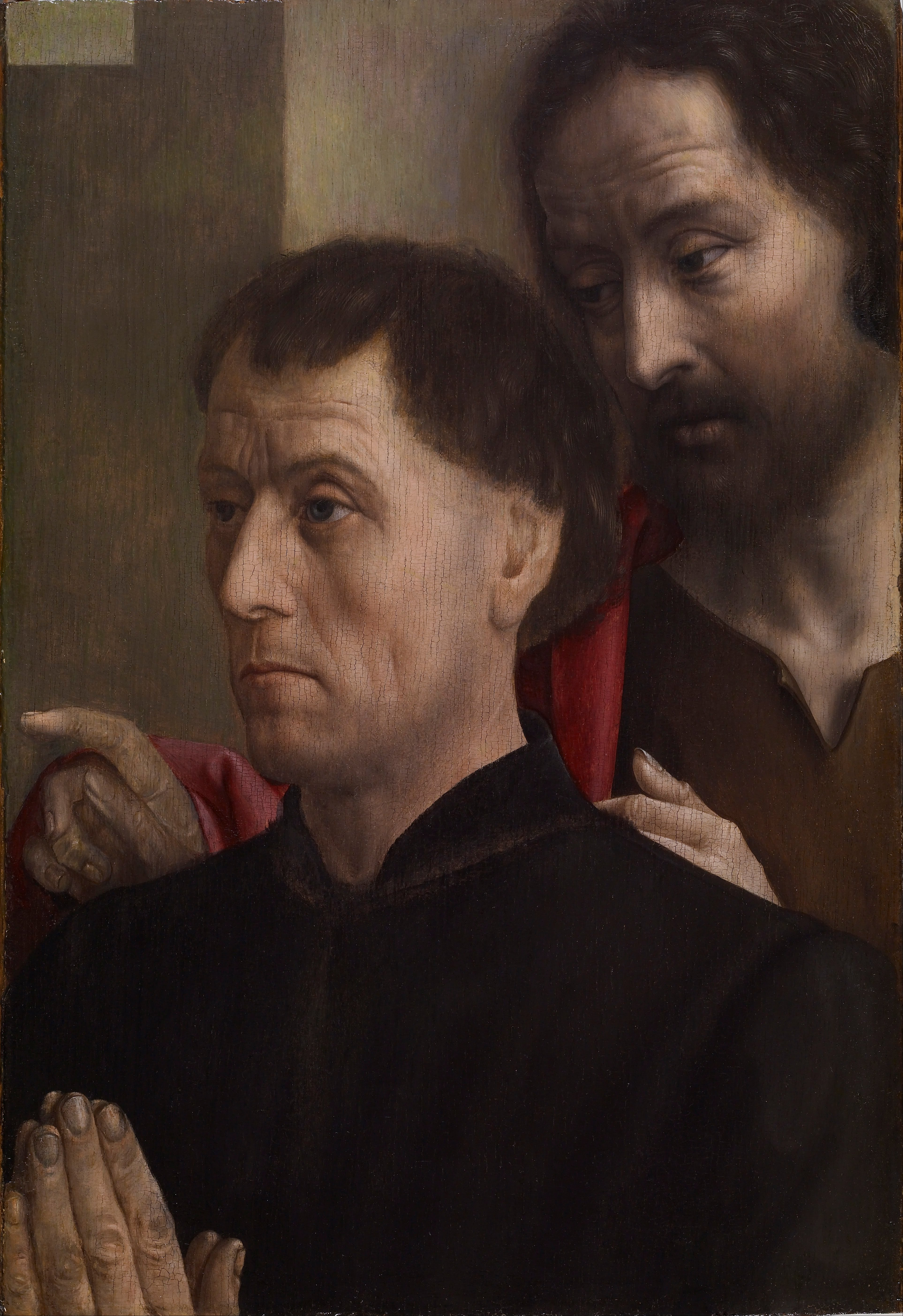 and the
and the  . These portraits usually show a man or woman praying. They often seem to be seeing a vision, like of the Virgin Mary.
. These portraits usually show a man or woman praying. They often seem to be seeing a vision, like of the Virgin Mary.
The  (around 1575) is a great example of his portrait work. This small painting was originally rectangular. It was probably part of a small altarpiece with two panels, called a diptych. Or it might have been part of a three-panel altarpiece, a triptych. The middle panel would have shown a Christian scene, like the Virgin and Child.
(around 1575) is a great example of his portrait work. This small painting was originally rectangular. It was probably part of a small altarpiece with two panels, called a diptych. Or it might have been part of a three-panel altarpiece, a triptych. The middle panel would have shown a Christian scene, like the Virgin and Child.
In this portrait, van der Goes shows his skill. He captures the man's strong and determined look. He does this by placing the man higher than the viewer. He also uses light and shadow to make the face stand out against a dark wall.
Van der Goes used chiaroscuro (strong contrasts between light and dark) to make the face look like stone. This, along with how the hands and background were painted, made some experts think an Italian artist painted it. But van der Goes's realistic style is clear. He carefully painted the dark tones in the man's face, the stubble on his chin, and his rough hands. This makes the man look very devoted.
Other portraits by van der Goes, like the one of Hippolyte de Bertohoz in the  , show similar realism. The
, show similar realism. The  also has these qualities. Van der Goes used small details in facial expressions to show what his subjects were feeling. For example, in the Portrait of a Man at Prayer, a raised eyebrow and tense muscles around the mouth show deep focus.
also has these qualities. Van der Goes used small details in facial expressions to show what his subjects were feeling. For example, in the Portrait of a Man at Prayer, a raised eyebrow and tense muscles around the mouth show deep focus.
How His Style Developed
Hugo van der Goes is known as one of the most original and new artists from the early Netherlands. It's hard to know exactly how his style changed over time. This is because many of his works are lost, and we don't know the exact dates for most of his surviving paintings. The Portinari Altarpiece is the only work we can be sure about.
However, art experts generally see a change in his style. He started with a style similar to Jan van Eyck, which made things look very real. This early style used rich colors and clear perspective. You can see this in the Monforte Altarpiece and the middle part of the Portinari Altarpiece. He might have learned this from artists like Petrus Christus.
Later, his paintings became less focused on making things look perfectly real. He started to make the artwork look more like a created image, separate from reality. He did this by using fewer colors and making figures and spaces look a bit distorted. Examples of this later style include the 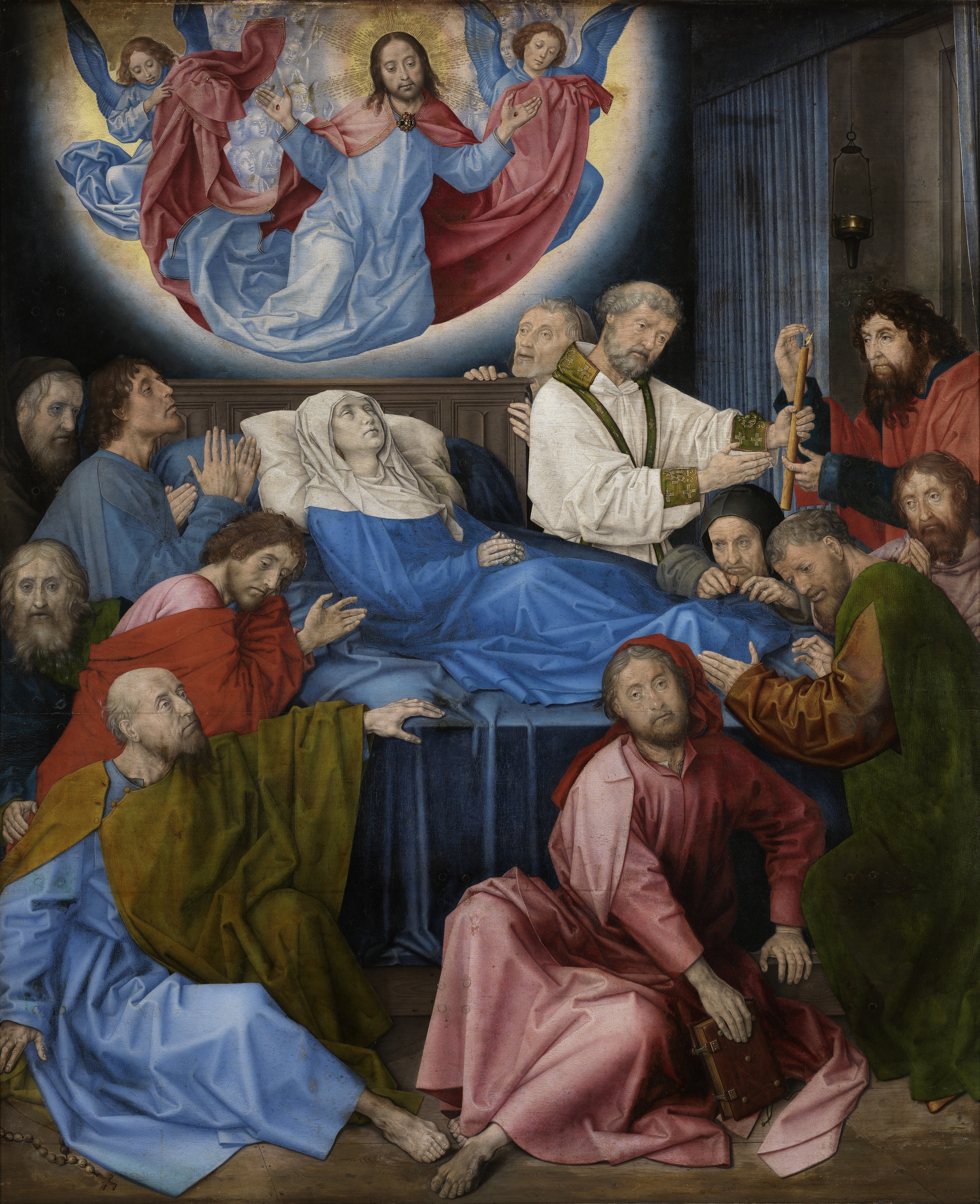 and the
and the  .
.
Some experts thought this change in style was because of his mental health issues. But later, people thought it was more about his religious beliefs. They believed his later paintings showed ideas from a religious movement he followed. This movement focused on meditation, which might have made him move away from making things look perfectly real.
The colors in his later  seemed to support this idea. But a recent cleaning of the painting showed that it was actually bright and colorful, not muted. This changed how experts thought about his style development.
seemed to support this idea. But a recent cleaning of the painting showed that it was actually bright and colorful, not muted. This changed how experts thought about his style development.
Not all experts agree that his style changed a lot. Some say his career was too short (only 15 years) for a big change to happen. Others believe he could paint in many different styles at the same time. They think he chose the techniques that best suited his purpose for each painting.
Drawings by Van der Goes
Hugo van der Goes made many drawings. These drawings, or even his paintings, were used by other artists to make copies. Many of his original compositions are now lost, but we know them through these copies.
After van der Goes died, a book illustrator named Alexander Bening likely got his drawings. Alexander Bening was married to Hugo van der Goes's niece. Alexander's son, Simon Bening, probably brought these drawings to Bruges later. This is why some of van der Goes's designs appear in illustrated prayer books made by artists from Ghent and Bruges.
A drawing called  is kept in Oxford. It is believed to be a rare drawing made by van der Goes himself. It might have been a study for a stained glass window.
is kept in Oxford. It is believed to be a rare drawing made by van der Goes himself. It might have been a study for a stained glass window.
Images for kids
See also
 In Spanish: Hugo van der Goes para niños
In Spanish: Hugo van der Goes para niños


